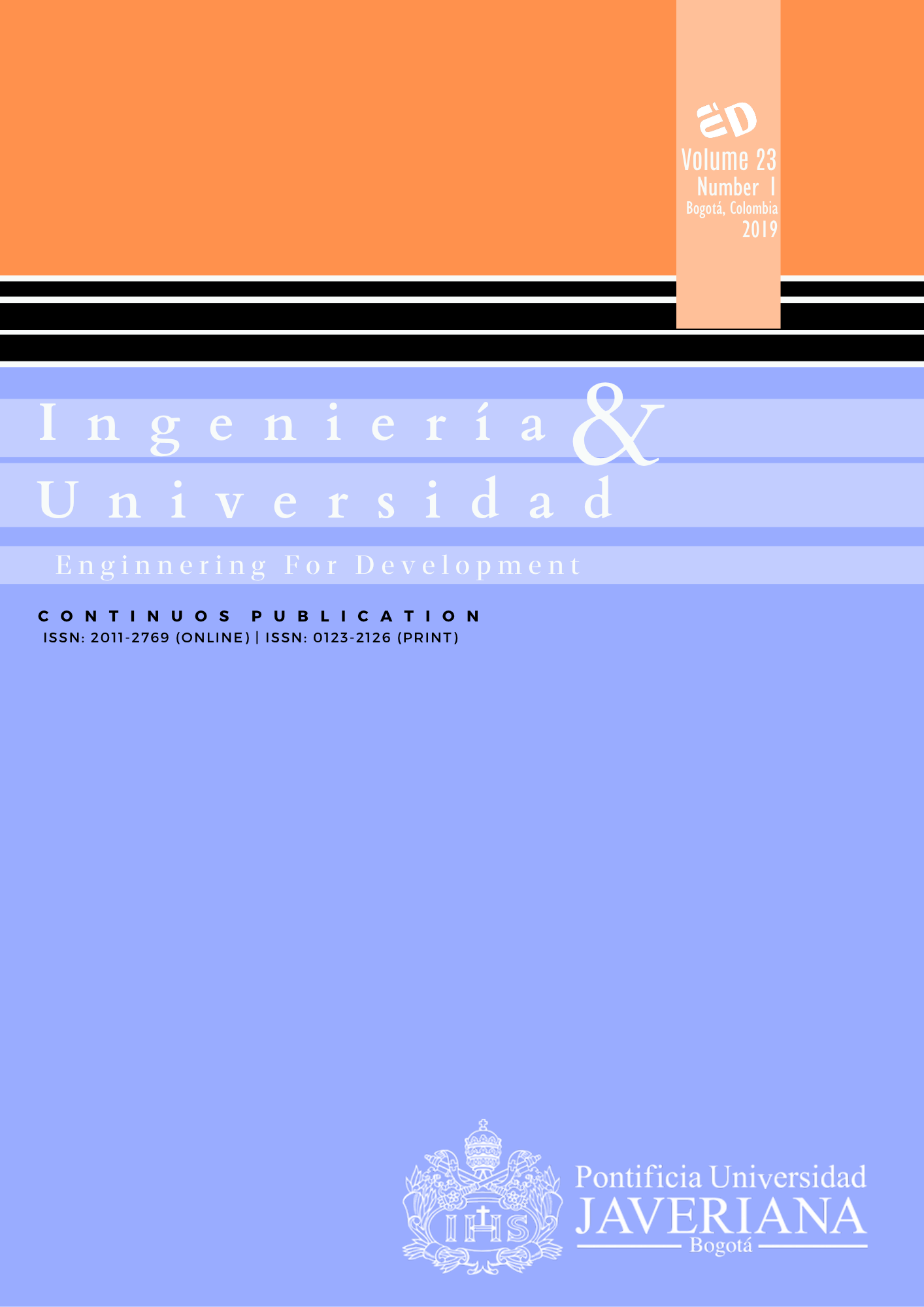Abstract
Introduction: Overpopulation in emergency services is a problem that can be observed worldwide, and although it has been addressed from different disciplines and perspectives, it still afflicts citizens who are subject to long waiting lists before being attended. Objective: The work here describes the design, development and the first validation of a Web and Mobile georeferenced crowd system for the city of Bogotá, Colombia, oriented to inform and empower the citizen on the population status of the emergency services found in the city. Materials and Method: In this document, we present the architecture, design, and features of the GALILEO System, with results regarding the first validation with citizens of Bogotá, to capture the acceptance and perceived impact of this type of solution in the context in which the System is proposed to function. Results and Discussion: Although GALILEO has not yet been massively implemented in the context for which it is proposed, the results presented here allow us to explore how Information and Communication Technologies (ICT) can be proposed to solve complex social problems, particularly considering the role of the citizen as a source and receiver of information.
[2] S. Weng, P. Huang, W. Chang, L. Wang, and C. Chang, “The impact of operations strategies for emergency room in Taiwan,” in 2013 Proc. Symp. Theory Model. Simul. DEVS Integrat. M&S Symp., DEVS 13. Society for Computer Simulation International, San Diego, CA, USA, Art. no. 18.
[3] M. L. García, M. A. Centeno, C. Rivera, and N. DeCario, “Reducing time in an emergency room via a fast-track,” in 1995 Proc. 27th Conf. Winter Simul., WSC ’95. IEEE Computer Society, Washington, DC, USA, pp. 1048–1053. doi: 10.1109/WSC.1995.478898
[4] N. Khurma, G. M. Bacioiu, and Z. J. Pasek, “Simulation-based verification of Lean improvement for emergency room process,” in 1995 Proc. 40th Conf. Winter Simul., WSC ’08. Miami, Florida, USA, pp. 1490–1499. doi: 10.1109/WSC.2008.4736229
[5] F. F. Baesler, H. E. Jahnsen, and M. DaCosta, “Emergency departments I: The use of simulation and design of experiments for estimating maximum capacity in an emergency room,” in 2003 Proc. 35th Conf. Winter Simul. Driving Innovat., WSC ’03. New Orleans, LA, USA, pp. 1903– 1906. doi: 10.1109/WSC.2003.1261651
[6] Z. S. Wong, A. C. Lit, S. Leung, K. Tsui, and K. Chin, “A discrete-event simulation study foremergency room capacity management in a Hong Kong hospital,” in 2016 Proc. 2016 Winter Simul. Conf., WSC ’16. IEEE Press, Piscataway, NJ, USA, pp. 1970–1981. doi: 10.1109/WSC.2016.7822242
[7] N. Rozanski and E. Woods, Software Systems Architecture: Working with Stakeholders Using Viewpoints and Perspectives. Addison-Wesley Professional, 2005.
[8] K. Malone and J. Griffith, “A case study in the use of Groovy and Grails,” in 2012 Proc. 27th Annu. ACM Symp. Appl. Comput., SAC '12. New York, NY, USA: ACM, pp. 1254–1255. doi: 10.1145/2245276.2231973
[9] Grails, A powerful Groovy-based web application framework for the JVM built on top of Spring Boot, Grails Framework [Online]. Available: https://grails.org/
[10] “Groovy/Grails Tool Suite™ will be available from Pivotal for a limited time.” Accesed on: Dec. 8, 2017. Available: https://spring.io/tools/ggts
[11] G. Irizarry, “Beginning native Android apps,” in 2015 Proc. SIGGRAPH 2015 Studio, SIGGRAPH ’15. New York, NY, USA: ACM, Art. no. 34.
[12] J. Solheim, “Web apps in the computer science curriculum: A guide using Heroku, Java servlets, and Postgres,” J. Comput. Sci. Coll., vol. 30, no. 5, pp. 126–133, May. 2015.
[13] R. Herzog, “PostgreSQL: The Linux of databases,” Linux J., vol. 1998, no. 46es, Art. no. 1, Feb.1998.
This journal is registered under a Creative Commons Attribution 4.0 International Public License. Thus, this work may be reproduced, distributed, and publicly shared in digital format, as long as the names of the authors and Pontificia Universidad Javeriana are acknowledged. Others are allowed to quote, adapt, transform, auto-archive, republish, and create based on this material, for any purpose (even commercial ones), provided the authorship is duly acknowledged, a link to the original work is provided, and it is specified if changes have been made. Pontificia Universidad Javeriana does not hold the rights of published works and the authors are solely responsible for the contents of their works; they keep the moral, intellectual, privacy, and publicity rights.
Approving the intervention of the work (review, copy-editing, translation, layout) and the following outreach, are granted through an use license and not through an assignment of rights. This means the journal and Pontificia Universidad Javeriana cannot be held responsible for any ethical malpractice by the authors. As a consequence of the protection granted by the use license, the journal is not required to publish recantations or modify information already published, unless the errata stems from the editorial management process. Publishing contents in this journal does not generate royalties for contributors.



